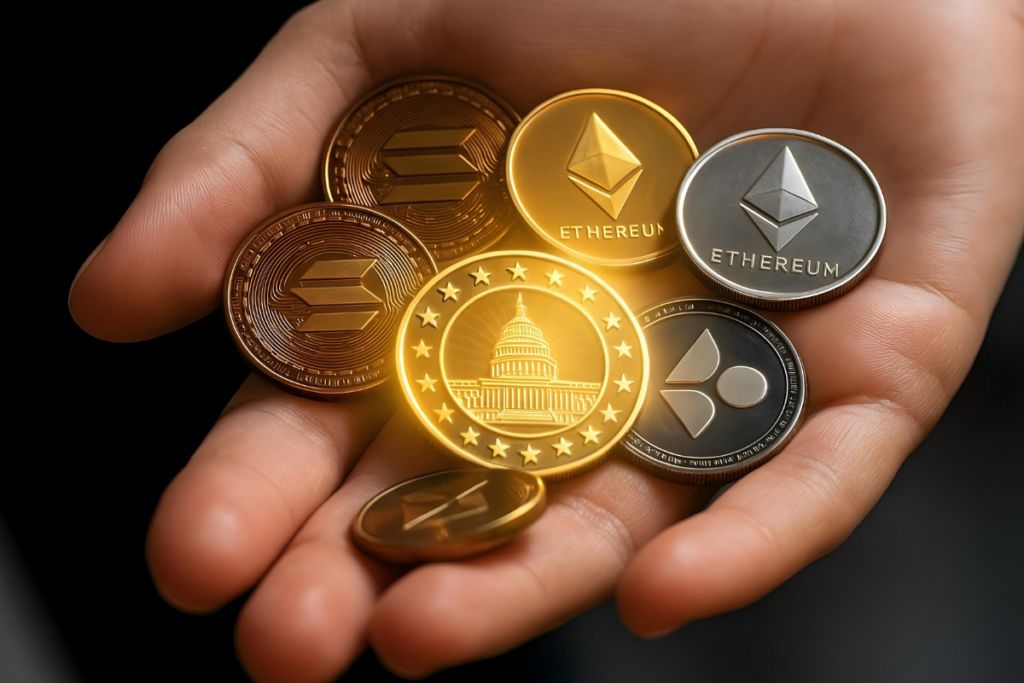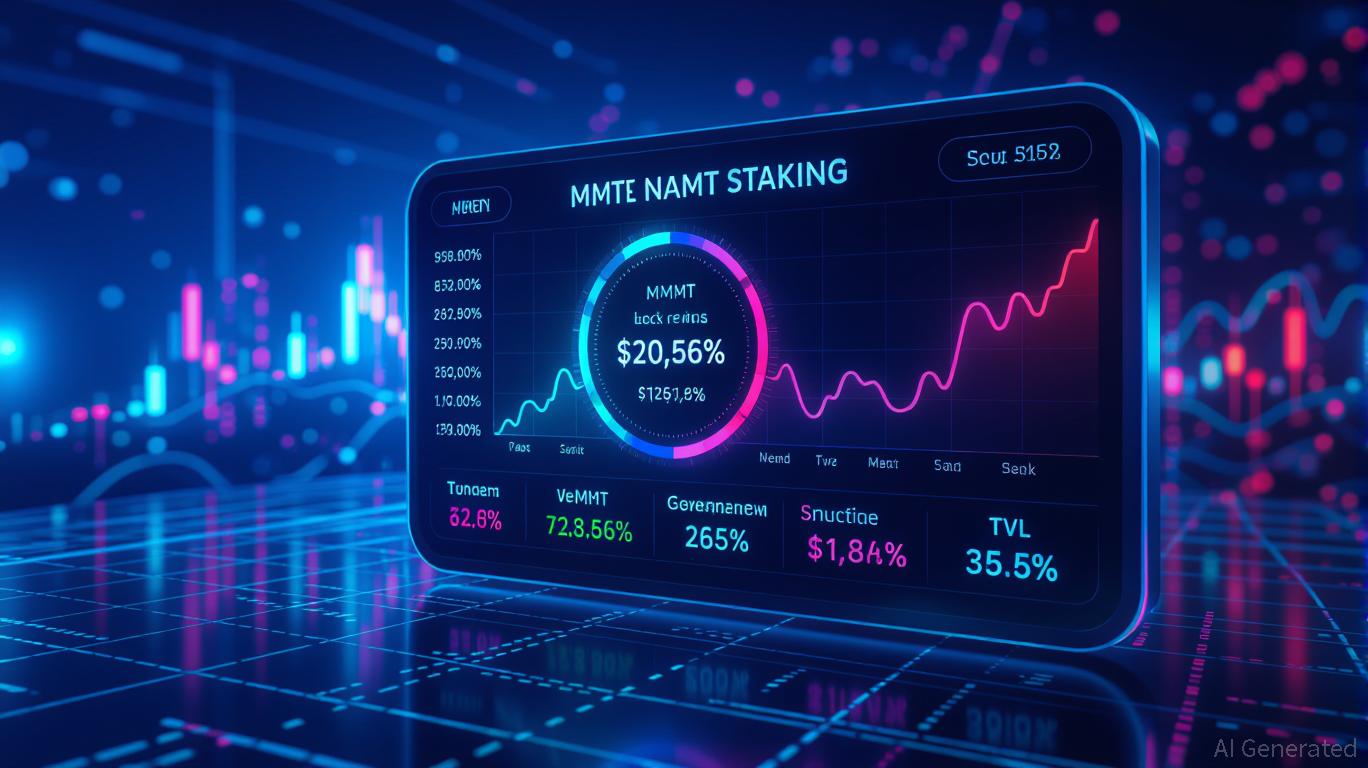KITE’s Price Movement After Listing: An Analysis of Valuation Fluctuations in New Technology Tokens
- KITE token's November 2025 Binance listing triggered $263M trading volume but immediate $0.11→$0.095 price drop, reflecting speculative "buy the rumor, sell the news" dynamics. - Unlike Microsoft-backed Nebius Group (417% 2025 gain), KITE lacks institutional coverage and revenue streams, amplifying retail-driven volatility with $929M FDV vs $167M market cap. - Broader 2025 tech sector swings (e.g., Corpay's 24.5% decline despite strong Q3) highlight how AI/blockchain assets like KITE face valuation chall
A Turbulent Start: KITE's Price Swings
KITE made its debut on Binance on November 3, 2025, marking a significant event for the token. It started trading at $0.11 but swiftly fell to $0.095, a move that mirrors the classic "buy the rumor, sell the news" pattern often seen in speculative markets, as detailed in a
This difference underscores an important point: while Nebius enjoys the support of major institutions and a reliable revenue stream, KITE is still an emerging token with little analyst attention. As of mid-November, no prominent Wall Street analysts had issued official ratings for KITE, unlike Kite Realty Group Trust (KRG), a real estate investment trust that holds a "Hold" consensus despite mixed opinions, according to

Wider Market Forces and Industry Comparisons
KITE's price instability should be viewed within the context of the broader technology sector, especially AI and blockchain, which have both seen significant volatility in 2025. For example, Corpay (CPAY), a diversified financial services company, posted strong third-quarter earnings but still saw its stock drop 24.5% for the year, showing how market sentiment can outweigh solid fundamentals, according to a Simply Wall St analysis
. In a similar vein, KITE's price reflects a battle between optimistic views about its "agentic economy"—where AI agents can transact independently—and doubts about its real-world use and adoption, as reported byComparing KITE to Nebius Group further highlights this divide. Nebius's sales multiple of 114.9x, though high, is supported by a $17.4 billion contract with Microsoft and an anticipated 392% revenue increase in 2025, according to
What This Means for Investors
KITE's performance after its listing serves as a warning about the dangers of price swings in new tech assets. Although its FDV of $929 million points to confidence in its future, the current price of $0.095—significantly below its opening price—shows how fragile that confidence can be. The lack of clear regulations and the token's presence on speculative trading platforms like Binance's Alpha section only add to this instability.
On the other hand, KITE's inclusion in BingX's Xpool pre-listing platform, which let users stake assets for early access, as mentioned in a
. Should Kite's AI-based payment network gain momentum, it could lay the groundwork for lasting growth. For now, investors must balance the token's speculative appeal with its unproven utility and the prevailing cautious mood in the market.Final Thoughts
KITE's price movement after its launch is a clear example of the valuation swings typical of newly introduced tech tokens. While its initial trading activity and FDV indicate strong interest, the subsequent price drops and limited analyst attention highlight the difficulties in determining its real value. As the AI and blockchain industries continue to develop, investors should stay alert, balancing enthusiasm for innovation with careful research and analysis.
Disclaimer: The content of this article solely reflects the author's opinion and does not represent the platform in any capacity. This article is not intended to serve as a reference for making investment decisions.
You may also like
Bitcoin soars past $105K after Trump’s $2,000 tariff payout promise ignites crypto rally

MMT Token Value Soars: Governance Enhancements and DeFi Drivers in 2025
- MMT token surged in late 2025 due to ve(3,3) governance upgrades and DeFi adoption growth. - Binance's 0.75% genesis airdrop boosted community engagement and institutional validation. - TVL exceeded $600M with 2.1M users, driven by cross-chain integrations and fee-sharing incentives. - Inflationary token unlock risks (79.59% supply over 48 months) balance against Q1 2026 perpetual DEX launch. - Momentum's RWA platform and Sui-Ethereum bridging position it as a DeFi governance hub with sticky capital pote

MMT Token TGE and Its Influence on the Market: Evaluating Practical Use and Adoption Prospects Amid Market Volatility
- MMT token's November 2025 TGE triggered a 1330% price surge and attracted institutional investment. - Listings on Binance/Upbit and $10M funding from Coinbase Ventures amplified liquidity and market credibility. - Speculative trading dominates growth, with TVL at $265M but limited real-world utility beyond DeFi staking. - Phishing risks and reliance on exchange incentives highlight adoption challenges despite institutional backing. - Future viability depends on ve(3,3) DEX launch and RWA integrations to

Decentralized Finance's New Era: Examining TWT's Growth Following Its Addition to Exchanges
- Trust Wallet Token (TWT) shifted from exchange integrations to a loyalty-driven ecosystem via Trust Premium, linking token utility to user engagement tiers (Bronze-Gold). - TWT's price stabilized post-launch, with analysts projecting a $5.13 peak in 2025, driven by cross-chain utility and tiered incentives for long-term holdings. - The model redefines DeFi tokens as functional ecosystem components, prioritizing user retention over speculative trading, aligning with trends like tokenized real-world assets
